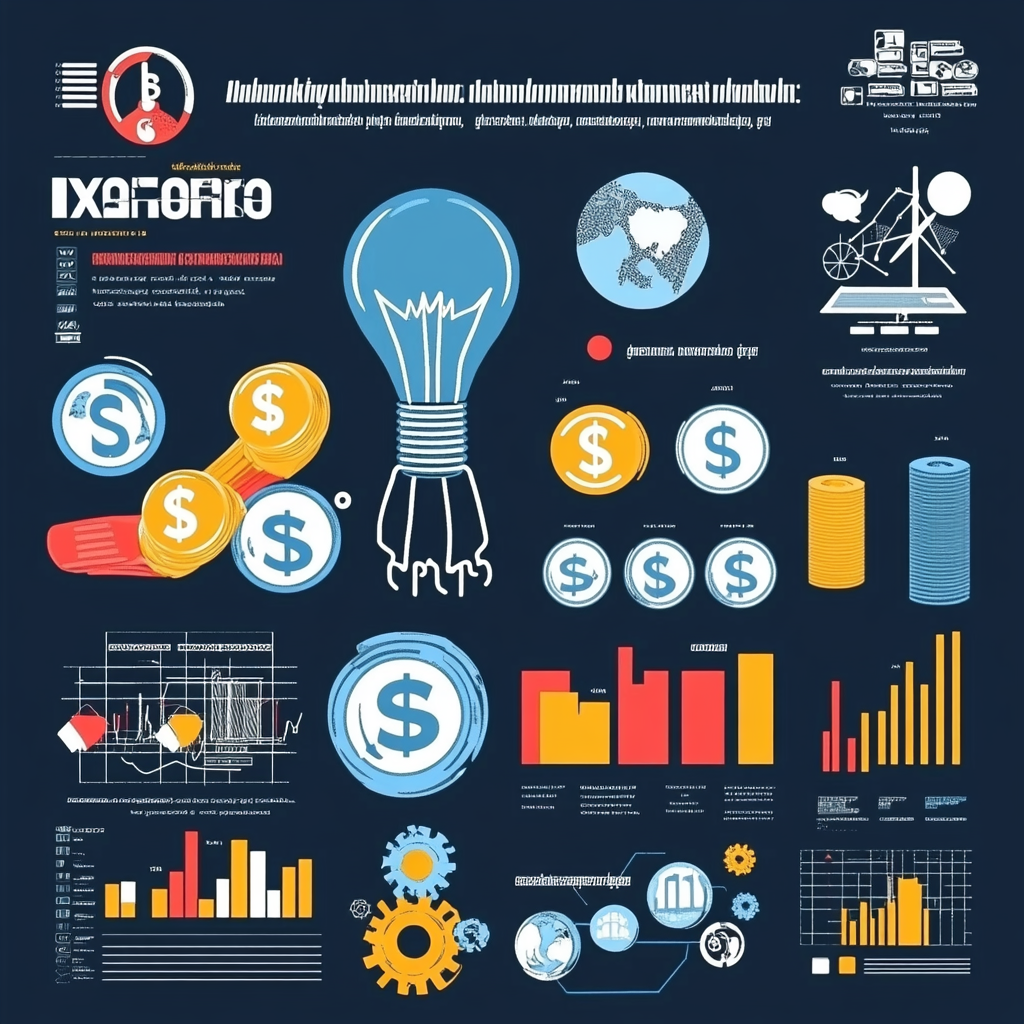
Evaluating How the Shift to Renewable Energy Affects Financial Markets
Waltzing into the Clean Energy Transition: The Costly Dance of Renewable Resources
Let’s be honest: If you’re here reading about the clean energy transition, you’re either concerned about the planet (kudos to you) or you’re just looking for some juicy tidbits to throw around at your next cocktail party (we don’t judge). In any case, hold onto your hats, ladies and gents; we’re diving deep into the choppy waters of financial hurdles that’re piling up on the beautiful shores of renewable energy sources. This isn’t just another boring economic analysis—it's a journey where money meets Mother Nature, and let me tell you: they don’t always dance perfectly together.
The Phantom Billions
Imagine a galactic scale: it’s not just a cloud of stars but a whirlpool of financial demands. To touch the dreamy shores of net-zero emissions by 2050, we’re looking at an astronomical average annual investment of about $3.5 trillion globally—sticky cash growing on trees, right? With a total estimated need of $110 trillion over the next three decades, it seems like we need a heavenly bank to fund this celestial mission. Spoiler alert: We might not get there by mere luck; we need some serious cash flow if we’re going to make the clean energy transition a reality.
High Stakes, Higher Costs
As we strut boldly into the realm of emerging and developing economies, it becomes painfully clear that high financial costs act like an anchor weighing down a ship trying to set sail. The cost of capital resembles a dragon guarding the treasure trove of investment for clean energy projects. While wealthy nations typically enjoy lower financing costs—that elusive treasure—they’re two steps ahead of developing countries, where these costs can be more than double. An encouraging example? Utility-scale solar PV efforts in these nations are often haunted by costs that rake up an extra USD 150 billion annually, keeping those dreams just out of reach.
Interest Rates: The Grim Reaper of Renewables
Now, onto the fickle monster known as interest rates! Picture this: you've got your eye on renewable energy sources like solar and wind—symbols of hope amidst the carbon chaos. Here’s the kicker: when interest rates rise, these technologies seem to slip further from our grasp, their cost-effectiveness dimming. When the interest rate hits a lofty 10%, solar and wind find themselves competing against the goliath of gas-based electricity. When gas prices are high, suddenly, they might just pull ahead, but let's face it—this is a game played on a tight rope.
Where to Invest? The Big Leagues of Clean Energy
What’s the best way to distribute that colossal cash mountain? Let’s dissect the key sectors clamoring for financial love. The electricity sector arguably requires the largest slice of the investment pie, needing a sumptuous $2.4 trillion annually—good luck trying to consume that without a few pots of gold. What’s included in that hefty investment? Think zero-carbon power generation and the all-important power networks plus storage and flexibility on the grid.
Utility-scale solar and wind are set to snag nearly half of investments in emerging economies—talk about star players! Then there’s energy efficiency, with upgrades to buildings and gadgets calling for more love too. The whole shebang looks like a remake of "The Hunger Games," where resources are scarce, and we must choose wisely.
A Funding Gap Wider Than Everest
Now let’s check the funding gap—yes, there’s always a gap, isn’t there? It’s projected that emerging economies will experience a staggering $5.8 trillion annual requirement from 2023 to 2030. This figure is eye-wateringly equivalent to roughly 19% of their GDP. Let’s take a moment to process that: the less developed countries are carrying an elephant-sized burden, with the per-person annual costs of this transition being nothing short of outrageous compared to their earnings.
Save the Day: Policy Recommendations to the Rescue!
So, how do we rescue this clean energy maiden from the clutches of financial distress? Let’s toss some lifelines into the mix. First, regulatory clarity is like a warm hug to investors, calming their nerves and inviting more players to join the project party. A dash of international financial and technical support could help steer the ship towards smoother waters.
Now let’s talk about concessional finance—sounds like the name of a hip café, right? Not quite! Developing countries need this financial support to triple to fuel the investment fire. And when things get tricky? First-loss guarantees and interest rate subsidies become essential in making renewable investments feel like a safer bet.
We can’t forget about fair finance policies. Making sure that the cost of capital for energy financing in developing countries drops to levels akin to what the big boys in mature economies enjoy could work wonders—think a smooth breeze on a hot summer day, bringing cooling relief. If we play our cards right, we could boost renewable electricity generation by a whopping 30%, while also easing those brutal energy expenditures to GDP ratios.
Conclusion: The Final Curtain Call
As we stand at the crossroads of technology and finance, it's clear that the clean energy transition is more than just an environmental responsibility—it’s a financial enigma waiting to be solved, particularly for developing economies struggling to keep their heads above water. Tackling those high capital costs, addressing those tricky interest rates, and implementing robust support policies are crucial moves if we want to make renewables the stars of the show.
So, let’s not just sit around twiddling our thumbs. Stay informed, get involved, and keep an eye on the evolving landscape of clean energy solutions. Whether talking sustainability over a drink or diving into the depths of economics, let's keep the conversation alive.
Want to stay up to date with the latest news on renewable energy transitions and financial solutions? Subscribe to our Telegram channel: @channel_neirotoken

